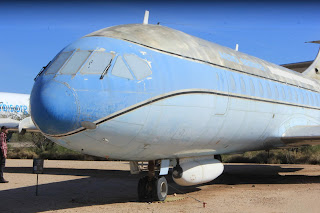Following the end of the Second World War, the Great Powers decided to weaken and parcel Germany among themselves. Jealousy makes yesterday’s friends today’s enemies. A good book tells us that all evil roots itself in the love of money. The western powers introduced the Deutschmark on June 20, 1948. Four days later, Stalin moved closed all traffic to West Berlin and moved 40 divisions into Soviet controlled Germany. History tells us what follows when fellow travelers disagree. Berlin needed at least 4,500 tons of coal and food per day to survive. The United States led the airlift. #Stalin knew it would fail. Herman Goering boasted his airlift could resupply Stalingrad. Four months later, 100,000 #Nazi soldiers went into captivity. #Capturing Germany, the heart of Europe, long since a dream of the Bolsheviks, would finally be in the hidden hand of the crooked seminarian from Tbilisi. The airlift missed their tonnage requirements. The C-47s (militarized DC-3s) could not do the job only the C-54 could land every three minutes and unload within 30 minutes and be off again. Between 1942 – August 1947, Douglas built 12,000 of these aircraft. But by 1948, the Defense Department had approximately 565. At its maximum, 312 of the 441 USAF C-54s were committed to the airlift. On July 28, 1948, General William H. Tunner took over Operation Vittles. Within 2 weeks, General Tunner broke the back of Stalin’s blockade. The C-47s and C-54s together flew over 92 million miles, almost the distance from Earth to the Sun. Despite the logistical problems and the Berlin winter, the airlift flew 300,000 sorties using over 330 aircraft a cost of $224 million delivered 2,323,738 tons of food, fuel, machinery, and other supplies. Stalin lifted the siege on May 12, 1949, though the flights continued until September 30, 1949. 101 men died including 39 British, 31 American and 13 German civilians.










A partial list of the America dead can be found here:
1st Lt George B. Smith
Tuscaloosa, Alabama
Captain James A. Vaughan
New Haven, Connecticut
Cpl Norbert H. Theis
Cunningham, Kansas
1st Lt Leland V. Williams
Abilene, Texas
1st Lt Eugene S. Erickson
Collinsville, Illinois
PFC Ronald E. Stone
Mt. Sterling, Kentucky
Mr Karl V. Hagen
New York, New York
Sgt Richard Winter
Seattle, Washington
1st Lt Ralph H. Boyd
Fort Worth, Texas
1st Lt Charles H. King
Britton, South Dakota
Captain Billy E. Phelps
Long Beach, California
1st Lt Craig B. Ladd
Minneapolis, Minnesota
1st Lt Robert W. Stuber
Arlington, California
1st Lt Willis F. Hargis
Nacogdoches, Texas
TSgt Charles L. Putnam
Colorado Springs, Colorado
Major Edwin C. Diltz
Fayetteville, Texas
TSgt Lloyd G. Wells
San Antonio, Texas
1st Lt Robert P. Weaver
Fort Wayne, Indiana
Captain William R. Howard
Gunnison, Mississippi
AD/3 Harry R. Crites, Jr.
Lafayette, Indiana
1st Lt Royce C. Stephens
San Antonio, Texas
Captain Joel M. DeVolentine
Miami, Florida
1st Lt Richard M. Wurgel
Union City, New Jersey
1st Lt Robert C. von Luehrte
Covington, Kentucky
1st Lt William T. Lucas
Wilson, North Carolina
1st Lt Lowell A. Wheaton, Jr.
Corpus Christi, Texas
2nd Lt Donald J. Leemon
Green Bay, Wisconsin
PFC Johnny T. Orms
Rhein-Main Air Base
Captain William A. Rathgeber
Portland, Oregon
TSgt Herbert F. Heinig
Fort Wayne, Indiana
Sgt Bernard J. Watkins
Lafayette, Indiana
#pilot #aircraft #jet #aviation #plane
#planepics #airplanespotting #aircraftspotter #justplanes #airplanes1001
#avgeeks #airplanesdaily #airplanesdaily #megaplane #instaviation #aviationpic
#airplanelovers #aviationpics #igaviation #aviationphotos #aviations
#proaviation #aviationgeeks #airplanelovers101 #airplanespotter #av1ati0n
#megaaviation #avpic

























































